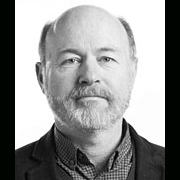
Lorenzo Ghiberti’s Third Commentary
A study of optics
A British Academy-funded investigation by Huddersfield’s Professor Nicholas Temple and University of Rome’s Professor Cecilia Panti is interpreting the 15th century goldsmith and sculpture Lorenzo Ghiberti’s incomplete manuscripts reflecting on artistic progress.
MORE than five centuries ago, an Italian artist renowned for his bronze sculptures penned a document that included remarkable theories about how we view art and the world around us. Now, a professor at the University of Huddersfield is heading a project that aims to unlock the mysteries of the manuscript and provide its first English translation.
It will lead to a book that could mean historians must rethink existing ideas about Renaissance art. There have also been two academic conferences investigating the issues, taking place in Florence and Huddersfield.
Nicholas Temple, who is Professor of Architecture, is collaborating with Professor Cecilia Panti of the University of Rome on a British Academy-funded investigation of the so-called Third Commentary of Lorenzo Ghiberti, an artist who lived from 1378-1455 and is best known for the bronze Gates of Paradise at the Baptistry in Florence.
He wrote three Commentaries, described by Professor Temple as “a mysterious unfinished text about the history of art from antiquity to Ghiberti’s own period”. He and Professor Panti are completing a ground-breaking translation and scholarly analysis of the third and longest of the manuscripts.
“It is unusual because it is a study of optics – the way in which we see the world,” said Professor Temple. “It is a strange instruction for artists on how they visualise their own work, and central to Ghiberti’s investigation is the importance of light,” he continued.
“The document is in fragments and was never finished, so most scholars have given up trying to translate it. It has been described as incomprehensible!”
However, Professor Temple and Professor Panti are nearing the conclusion of their project and aim to publish the results in book form during 2020. In addition to the first English translation of the text – from the original vernacular Italian – the edition will include an analysis of the sources drawn on by Ghiberti. They included Arabic studies of vision and light, immensely influential at the period.

Nicholas Temple
Professor of Architecture
Professor Temple is an expert in the fields of perspective and architectural history. He took the lead in organising the Huddersfield symposium, entitled ‘Vision, Perspectiva and Shifting Modalities of Representation’, which welcomed experts in film, modern art, photography, the moving image and digital media to present papers, including the University’s Head of Architecture and 3D Design, Professor Nic Clear, an expert on 3D scanning.
Ghiberti was writing at a time when the rules of perspective in art were being formulated, but his theories provide an alternative – “more about the importance of light than geometry”, said Professor Temple.
“Perspective has a tendency to fix the observer in a presumed optimum vantage point external to the picture. But, in Ghiberti, we have the notion of an itinerant observer, not fixed in one space but experiencing art in its totality.”
The content of the Third Commentary, its debt to Arabic sources, and its contemporary ramifications have been explored at two academic conferences co-organised by Professor Temple. The first took place in Florence and was titled Arabic and Latin Science of Vision and the Theory of Perspective in Early Renaissance Florence. The second symposium was at the University of Huddersfield, entitled Vision, Perspectiva and Shifting Modalities of Representation.
Professor Temple and Professor Panti were among the leading academics in the fields of optics, perspectives, art history, photography, cinema and digital media who gave presentations exploring changes in visualisation and representation from the time of Ghiberti to the modern age.
In addition to British Academy backing, the project to translate and analyse the Third Commentary has also been supported by the Società Internazionale per lo Studio del Medioevo Latino (SISMEL) in Florence; Union Académique International (JAI) in Brussels; Micrologus (Nature, Sciences and Medieval Societies) in Florence; and University of Rome, Tor Vergata.
More news
How Tudor gents sired scores of bastard children
New book shows how the upper crust clamped down on extra-marital sex among the lower orders, but didn’t practice what they preached
Girl power in Italy’s 16th century music
Professor Laurie Stras explores the impact of nuns and the convent in shaping music of the Italian Renaissance
The everyday lives of 17th century ordinary folk
Professor Jessica Malay’s team will scrutinise over 8,000 legal documents for clues about the lives of ordinary men and women
